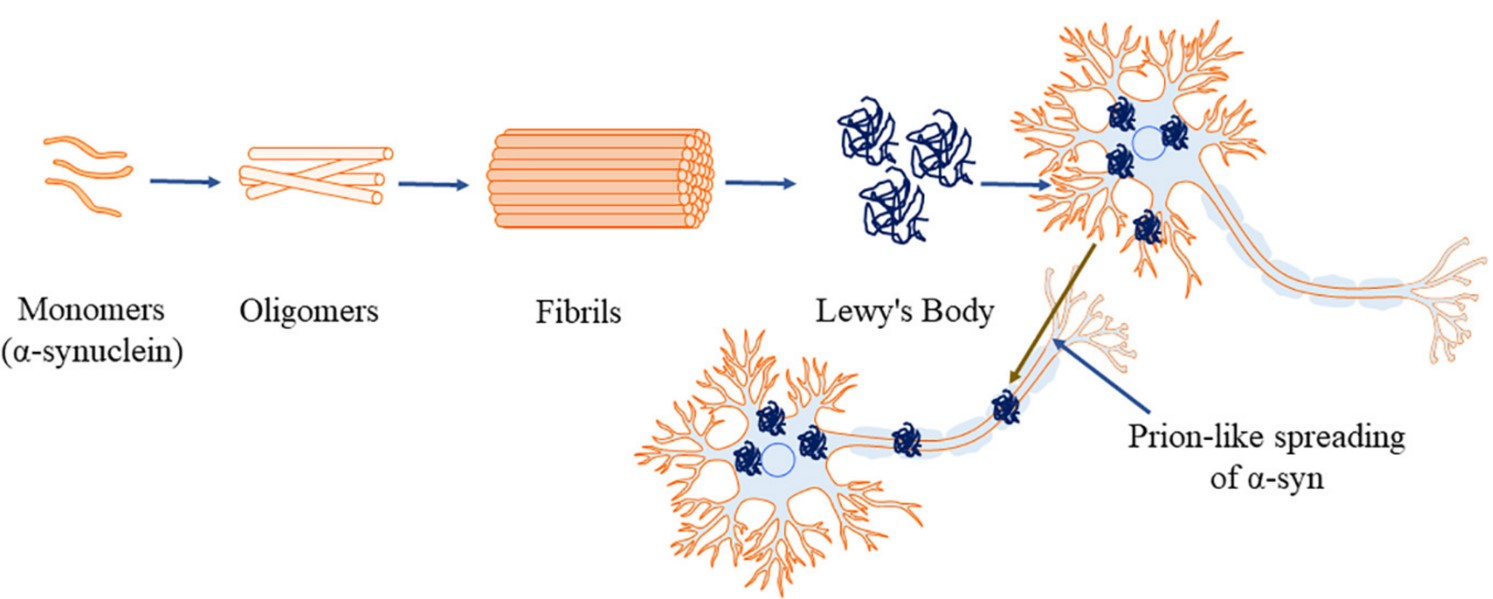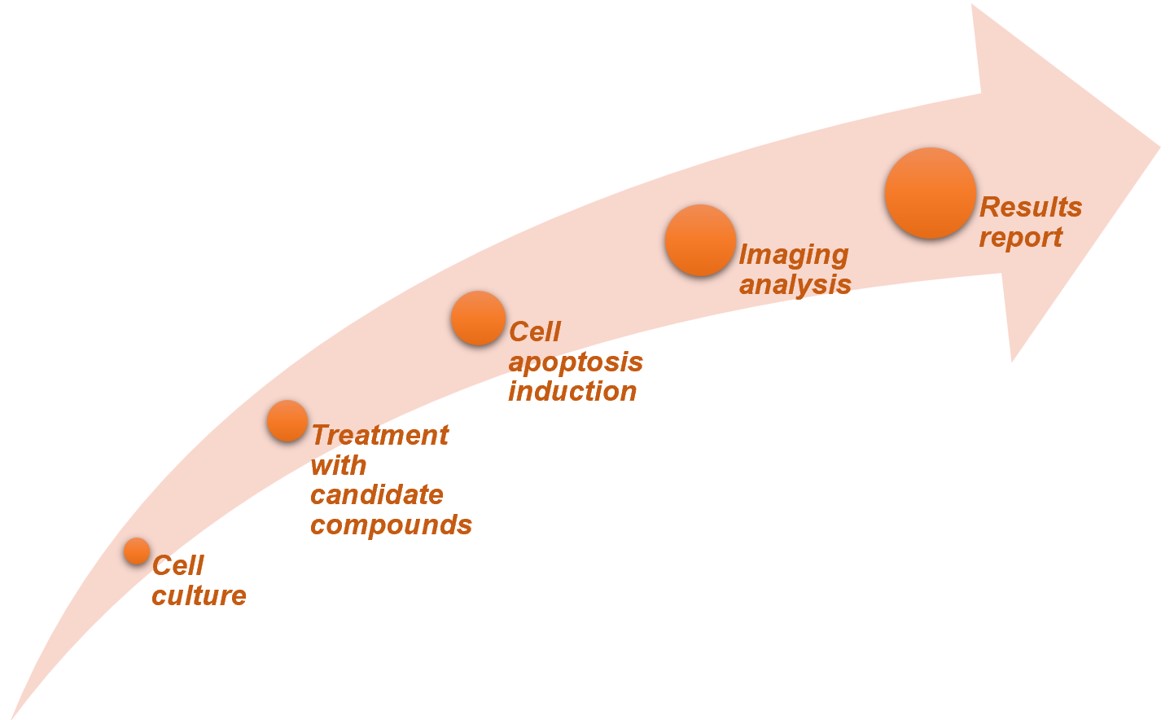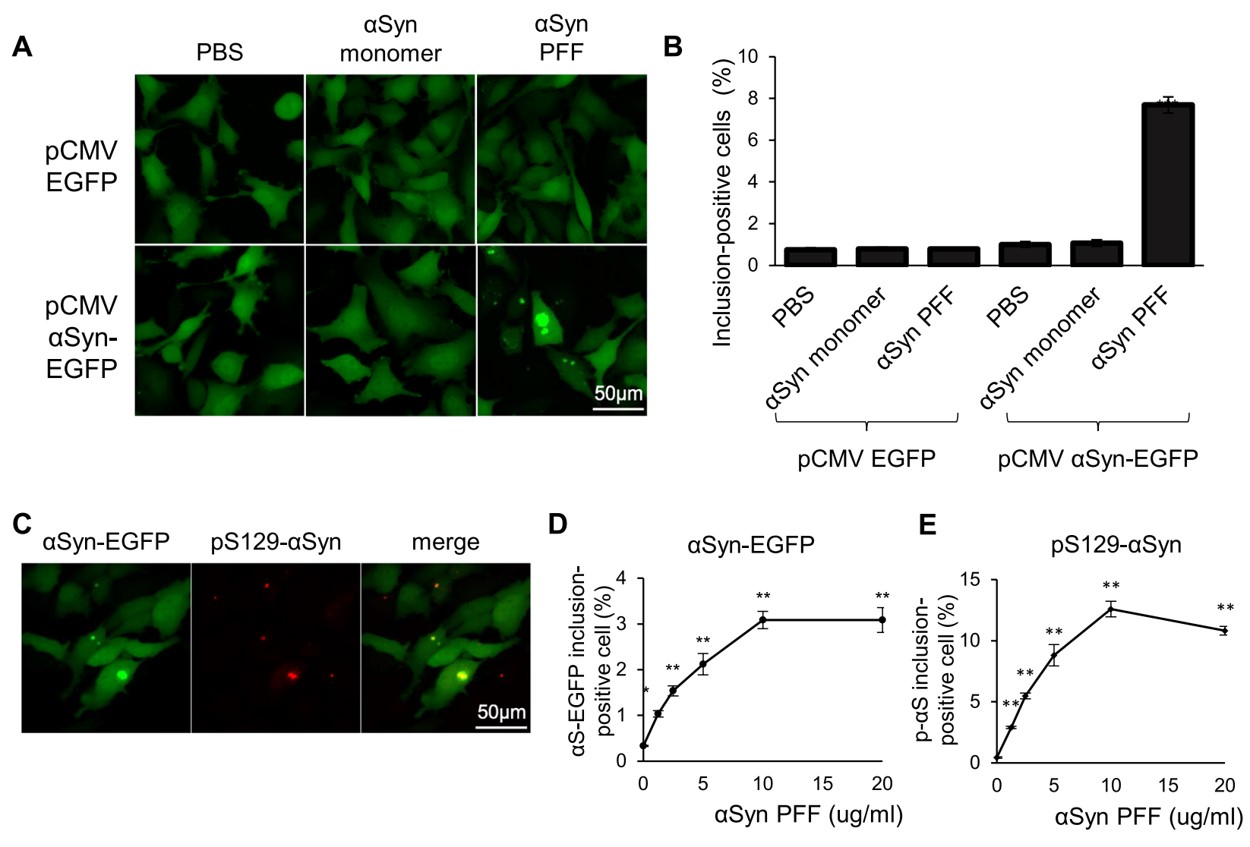In Vitro Cell based α-synuclein Aggregation Assay Service
Overview of α-synuclein Aggregation
α-Synuclein plays a crucial role in the functioning of presynaptic neurons and its structure is heavily influenced by its surroundings. The presence of misfolded and aggregated α-synuclein is a key feature in the development of Parkinson's disease and other neurodegenerative disorders. Research indicates that the aggregation of α-synuclein can lead to cell death in neurons. As a result, interventions focusing on preventing α-synuclein aggregation and its harmful effects could hold promise as potential therapeutic approaches.
 Fig. 1 The aggregation process of α-Synuclein.1
Fig. 1 The aggregation process of α-Synuclein.1
In Vitro Cell-based α-Synuclein Aggregation Assay Service at Creative Biolabs
Creative Biolabs globally delivers an in vitro cell-based α-synuclein aggregation assay service to quantify the expression and aggregation of α-synuclein aiding in therapeutic development.
Our in vitro cell-based α-synuclein aggregation assay utilizes apoptosis induction to trigger the formation of α-synuclein aggregates. We co-incubate the cells with the test compounds to evaluate their effect on preventing α-synuclein aggregation. Subsequently, we induce cell apoptosis and image the fixed cell to quantify the α-synuclein aggregation. Within the process, we provide a variety of cell lines expressing fluorescent α-synuclein and also have the ability to construct cell lines that meet customers' special requirements. Together with our experienced research team, we have more confidence to present everyone with desirable findings in a rapid timeline.
 Fig. 2 Workflow of our in vitro cell-based α-synuclein aggregation assay.
Fig. 2 Workflow of our in vitro cell-based α-synuclein aggregation assay.
Cell Lines at Creative Biolabs
Creative Biolabs provides several well-constructed fluorescent α-synuclein cell lines to design for customers' projects:
| Cell Lines | Fluorescent α-Synuclein |
|---|---|
| Hela cell line | Green |
| HEK293 cell line | Green |
| U2OS cell line | Green |
| SH-SY5Y cell line | Green |
| SH-SY5Y cell line | Red |
| HEK293 cell line | Red |
Key Advantages
- High content and high throughput.
- High reproducible.
- Fast timeline: 3-4 weeks.
- Fluorescence-based assay.
- Quality assurance.
Case Study
The study screened 1262 FDA-approved compounds to discover potential αSyn aggregation inhibitors. The positive compounds were then further evaluated for dose dependency before being tested using a cell-based assay. The findings revealed TA (Tannic acid) caused a significant reduction of aggregation by 80% or more in αSyn inclusion-positive cells, with no notable cytotoxic effects, which demonstrated TA as the most promising candidate for inhibiting αSyn aggregation.
 Fig. 3 Cell-based assay for assessing α-synuclein aggregation.2
Fig. 3 Cell-based assay for assessing α-synuclein aggregation.2
Frequently Asked Question
Q: What do we need to consider when assessing compounds on inhibit α-synuclein aggregation?
A: The effectiveness of the tested compounds on a-synuclein aggregation may not be accurately reflected if the concentrations used are not within the optimal range. It is important to carefully select the concentration range for the analysis to ensure reliable results. Additionally, the choice of cells used in the experiment can also impact the outcomes. Factors such as the growth status of cells expressing α-synuclein and the number of passages they have undergone should be taken into consideration for accurate interpretation of the results.
If you are seeking a reliable partner to test your therapeutics, please contact us for more details about our in vitro cell-based α-synuclein aggregation assay service.
References
-
Ray, Bipul, et al. "Janus-Faced" α-synuclein: role in Parkinson's disease." Frontiers in Cell and Developmental Biology 9 (2021): 673395.
Distributed under Open Access License CC BY 4.0, without modification. -
Hideshima, Makoto, et al. "Two-step screening method to identify α-synuclein aggregation inhibitors for Parkinson's disease." Scientific Reports 12.1 (2022): 351.
Distributed under Open Access License CC BY 4.0, without modification.
For Research Use Only.
